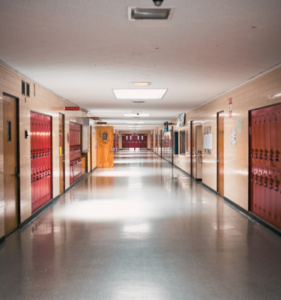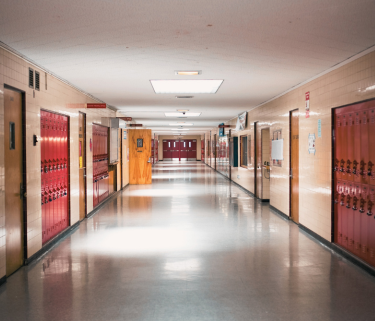Amanda and Other Michigan Advocates Fight to End Seclusion and Restraint in Schools
 When her seven-year-old son was in first grade, Michigan mom Amanda got an unexpected call from the new school principal. Her son, who has autism, had kicked the principal—and Amanda was being asked to keep her son home from school the next day.
When her seven-year-old son was in first grade, Michigan mom Amanda got an unexpected call from the new school principal. Her son, who has autism, had kicked the principal—and Amanda was being asked to keep her son home from school the next day.
A strong advocate for her son, Amanda agreed but asked the school to confirm that her son’s 504 plan was being followed. She also asked for an evaluation for an individualized education plan, since there seemed to be something going on.
But after the incident, things escalated.
“My seven-year-old was put into a classroom by himself. The staff exited the room, closed the door, and held the door handle so he could not leave. They said this was because he would throw items at them or threaten to break items if they stayed in the room. I remember my child saying to me, ‘Mommy, I was so scared. Why did they lock me in there?’ Even though the door wasn’t locked, he couldn’t get out of there and didn’t know what was going to happen.”
These seclusions continued to happen anytime there was a behavior. Despite regular therapy and practicing calming strategies daily before school, nothing worked. Within minutes of getting to school, Amanda would get a call saying her son was out of control and that she needed to go get him.
“Eventually, the therapist told us that our son had PTSD symptoms. That when he would walk into school, he was stuck in a fight or flight response, just waiting for something bad to happen.”
By second grade, the school told Amanda they could no longer support her son, so she moved him to a new school. On the first day at the new school, Amanda got another devastating call—this time from her son, who had been allowed to call his mom during a break from seclusion. When Amanda picked up the phone, she heard her eight-year-old say, “You have to come get me…. pick me up, pick me up. I couldn’t breathe, I couldn’t breathe.”
Frantic, Amanda called the school and was told that her son had been restrained using an approved hold before he was put in a seclusion room. She was told that if her son could talk, he could breathe too. “Years later, after George Floyd was smothered in the streets,” she says, “I realized that the idea that if people can talk, that they can breathe is wrong and that something very bad could have happened to my child.”
While Amanda’s son has not been restrained or secluded in a very long time, the trauma from those past experiences continues to impact him, even now in junior high. And the impact extends to Amanda’s whole family. “We don’t know how [this trauma] will affect us throughout our lives, and I don’t want any child or any family to have to experience what we went through. For me, part of healing is to take this experience and somehow do something with it to make it make sense.”
Part of this healing journey led Amanda to join Michigan Advocates to End Seclusion and Restraint.
Despite her son’s and family’s experience with their area public schools, Amanda wants others to know she doesn’t blame teachers for what happened.
“I am a huge believer in public schools and teachers, and I don’t blame our public educators for doing what they are trained to do. They have no other tools at their disposal and don’t have the funding to do something else… Legislation like the Keeping All Students Safe Act has money attached to it so we can give teachers other tools in their toolbox and the resources needed to use them… I also want parents to know they need to look out for signs of trauma if their child is secluded and restrained. If something strikes you as wrong in your gut, trust it, even if others are telling you it is okay. You know your kid the best.”








